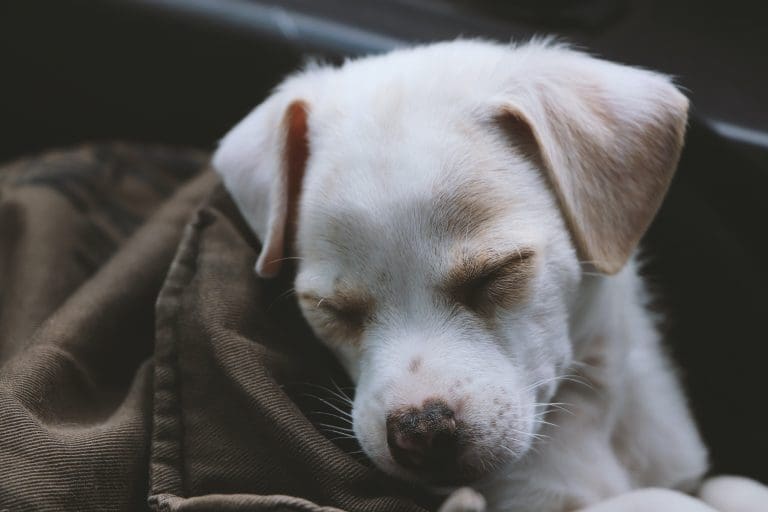Why Does My Dog Growl When I Pet Him?
Post Date:
December 10, 2024
(Date Last Modified: November 13, 2025)
When a dog growls while being petted, the sound is a form of communication that signals something about the animal’s comfort or state. Careful attention to context and body language helps identify whether the dog is warning, playing, or in pain.
Growling as Canine Communication
Growling is one vocal signal among many that dogs use to communicate intent, boundaries, or discomfort; it often differs acoustically from barks and whines and can function as a warning before escalation. Vocal behavior and social responses develop early, with the puppy socialization window occurring at about 3–14 weeks, when experiences shape how dogs interpret touch and human handling[1].
Common Immediate Triggers During Petting
Unexpected touch, especially when the dog is resting or focused on something else, can provoke a startle response and a quick defensive growl as a signal to stop. Pain or soreness localized to an area under pressure is a frequent immediate trigger for a growl during petting; a dog that tolerates gentle stroking in one spot but growls when that spot receives pressure is communicating discomfort. Overstimulation from repetitive rubbing or long sessions can push a previously calm dog into signaling with a growl rather than continuing to enjoy contact. Resource-related sensitivities — such as guarding a bed, food bowl, or favored human — may cause a growl during contact that approaches or touches the guarded resource.
Reading Body Language and Context
A single growl is rarely definitive on its own; pre-growl cues often include subtle changes in ear position, tightened lips, whale-eye, a stiffening of the body, and a tail that becomes rigid or tucked. The location on the body being touched matters: muzzle and head contact can be intimate for some dogs, while paws and flank areas are commonly more sensitive. The person doing the petting, recent events such as an injury or a startling noise, and the environment (busy vs. calm) all change the meaning of the same vocal signal. Watching for gradual escalation — from lip lift to growl to snap — helps owners intervene before a bite occurs.
Medical and Pain-Related Causes
Medical issues commonly underlie sudden or persistent growling during petting because touch becomes painful or irritating; identifying health causes should be a first step. A useful vital sign to check at home is body temperature: normal rectal temperature in dogs typically ranges from 101–102.5°F (38.3–39.2°C), and an elevated temperature may indicate infection or inflammation that increases sensitivity to touch[2].
| Condition | Common signs | Notes for the veterinarian |
|---|---|---|
| Arthritis | Stiffness, difficulty rising, localized pain on palpation | May require imaging and pain management |
| Dental or oral pain | Reluctance to let mouth be touched, drooling | Oral exam and dental radiographs often needed |
| Skin wounds or infections | Localized sensitivity, licking, redness | Inspect coat and skin carefully; may hide under fur |
| Neurological issues | Altered sensation, sudden pain reactions | Neurologic exam and imaging may be indicated |
When assessing for pain at home, observe gait, posture, ability to rise, and reactions to gentle palpation; note any sudden wince, repeated licking at a spot, or avoidance of being touched. For fluid or medication planning, clinicians commonly use maintenance fluid rates expressed in mL/kg/day; typical maintenance calculations frequently approximate 60 mL/kg/day for general planning in clinical settings[3]. Because medical causes are common and sometimes subtle, a veterinary exam is the right first step for new or worsening growling tied to touch.
Touch Sensitivity and Petting Technique
Sensitivity varies by body region: paws, flanks, base of the tail, and the muzzle are frequent no-go zones for many dogs. Pressure tolerance varies too — what a dog tolerates as a light scratch can become painful if the same area is compressed or twisted. Sudden or fast movements, reaching over the head, or prolonged repetitive rubbing can shift a dog from comfortable to overwhelmed. A consent-based approach starts with offering a hand for sniffing and allowing the dog to initiate closer contact; watch for relaxed lean-in versus tenseness or withdrawal to adjust technique.
Developmental, Temperament, and Breed Factors
Puppy socialization and early handling experiences strongly shape adult responses to touch; the sensitive socialization window occurs at about 3–14 weeks and is a critical period for teaching acceptance of handling and grooming[1]. Age-related changes matter as well: many professional guidelines classify dogs as “senior” once they are older than 7 years, and sensory decline or chronic pain become more likely in that life stage[4]. Breed tendencies and individual temperament — including genetic predispositions to guarding or heightened reactivity — interact with past trauma to determine whether a dog will tolerate or resist petting.
Learning History and Reinforcement Dynamics
Past outcomes teach a dog whether growling is effective. If a growl consistently makes a hand withdraw immediately, the dog learns that growling reliably stops the stimulus and may use that signal more often. Conversely, inconsistent or punitive responses can increase fear and lead to escalation, because punishment often suppresses the signal without addressing the underlying cause. Both classical and operant conditioning operate: petting paired repeatedly with positive outcomes builds a calm association, while aversive or unpredictable outcomes condition avoidance or defensive signaling.
Immediate Safety and De-escalation Steps
- Stop movement and remove the hand slowly without sudden jerks; avoid shouting or physical punishment.
- Create immediate space by calmly standing up, turning your body sideways, and stepping away to reduce perceived threat.
- Use temporary barriers such as a doorway or baby gate to separate people and the dog if repeated growling or attempts to snap occur.
- If the dog is with children or unfamiliar visitors, move the people away and allow the dog to settle before re-approaching at a distance.
These measures prevent escalation and preserve the dog’s communicative signal so you can address the underlying trigger without reinforcing fear or avoidance.
Training and Behavior-Change Strategies
Systematic desensitization paired with counterconditioning is the commonly recommended framework for changing responses to touch: begin at an intensity the dog tolerates and pair brief handling with high-value rewards while gradually increasing exposure. Practical protocols emphasize short, controlled practice: begin with brief touches of a couple seconds at a tolerated spot and deliver a reward immediately, gradually increasing duration and proximity as the dog remains relaxed[5]. Teach alternative behaviors — for example, a sit or a target touch — so the dog has a known, reinforced response to offer instead of growling, and practice frequently in low-stress contexts to build predictable expectations.
When to Consult Veterinarians and Behavior Professionals
Seek immediate veterinary care if a growling change is sudden and accompanied by severe pain, swelling, neurologic signs, or other acute clinical changes; these red flags suggest medical urgency. When behavior change is persistent or tied to complex triggers, consult a credentialed behavior professional — a certified applied animal behaviorist or a veterinary behaviorist — who can provide an individualized plan that may combine medical assessment, behavior modification, and environmental management. Bring videos of the behavior, notes about when the growl occurs and the context, and any recent medical history to make consultations efficient and evidence-based.






